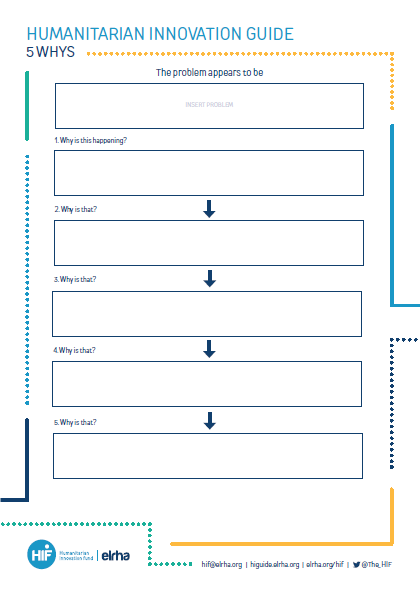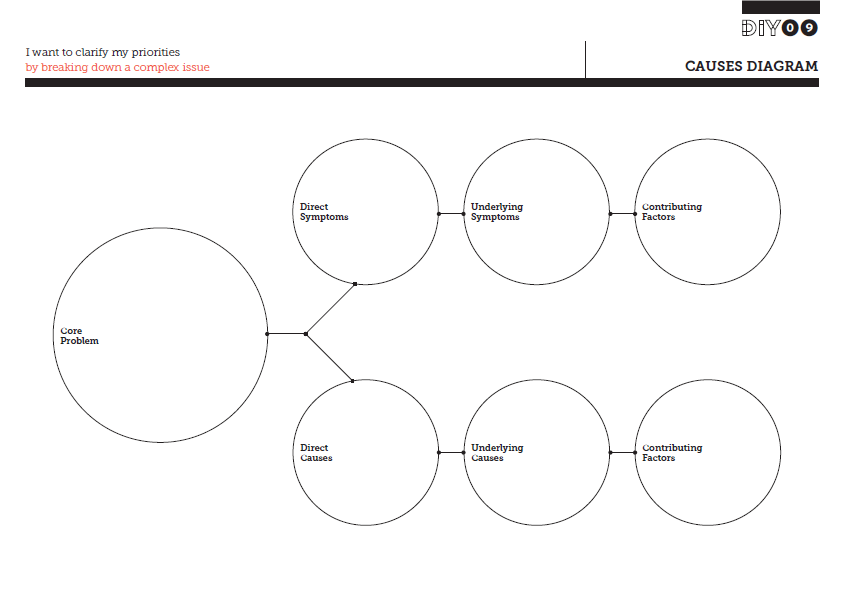Diagnosing root causes requires that we ask – and try to answer – explanatory questions. Explanatory questions often start with the word ‘why’, and are framed in a way that positions one thing in relationship to another, for example, Why are people hungry when there is food available at the market?
This is a process of testing what you think are the root causes or contributing factors to the problem you have identified. You should expect to challenge some of your initial assumptions and guesses as to why the problem is occurring, and hopefully gain some deep insights from the information and evidence that you have gathered that will help you understand the causes and contributing factors better.
You may find that you are looking at the problem the wrong way, or that you have misunderstood the problem. In some cases, you may even find that you should be focusing on a more fundamental problem than the one you initially identified. Whether you decide to stick with the problem you originally identified or address a deeper issue, this is completely ok!
Digging deep into causality can highlight power and conflict dynamics. As discussed elsewhere, it may be worth carrying out a conflict or power analysis to ensure that you understand the local political, cultural, religious and power dynamics before embarking on these exercises.
Be wary of whether causes and contributing factors change over time, and across the phases of the disaster management cycle, and as always, try to engage affected people in the analysis of the problems wherever possible. How a problem is defined, and who defines it, is critical to how it is addressed.

